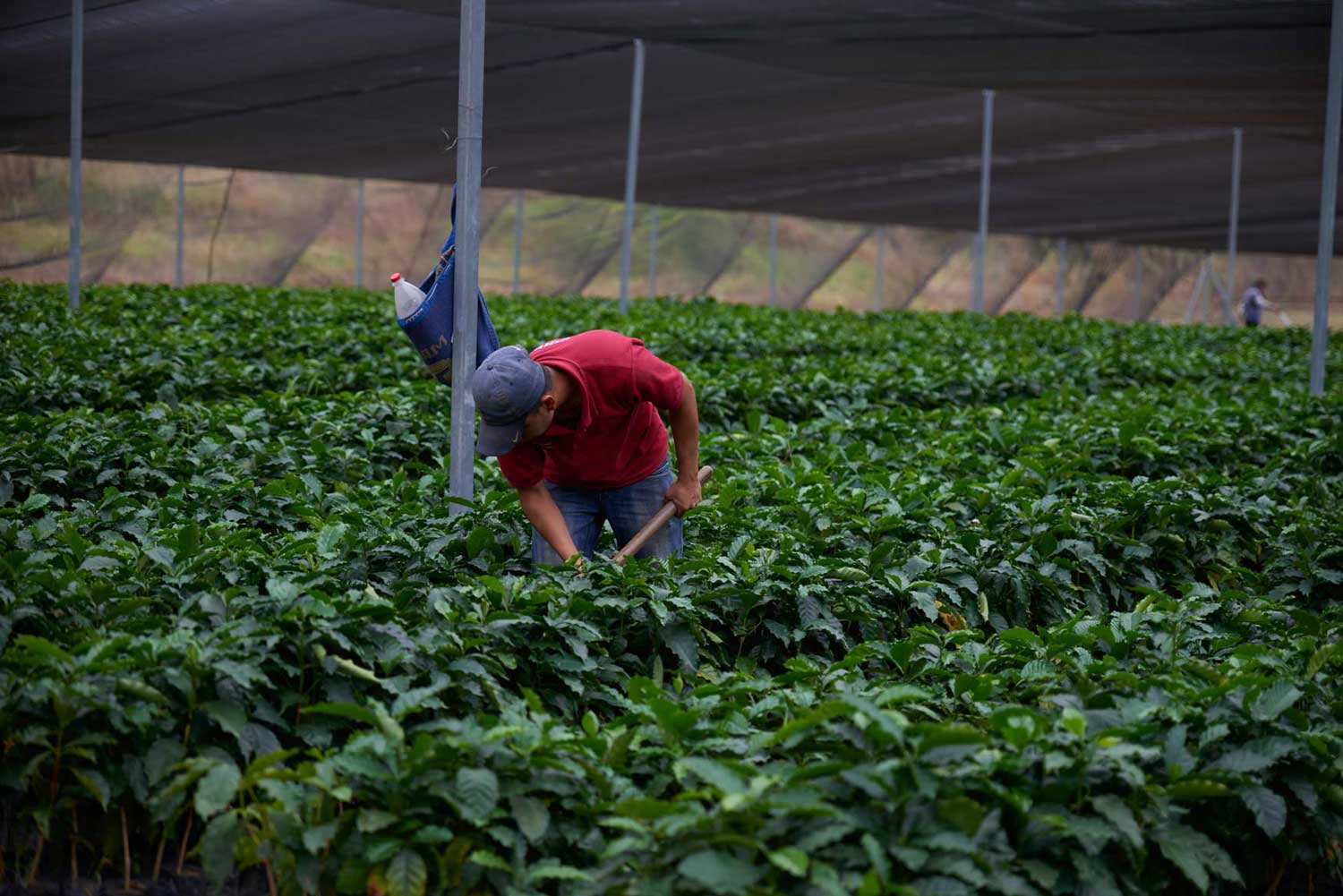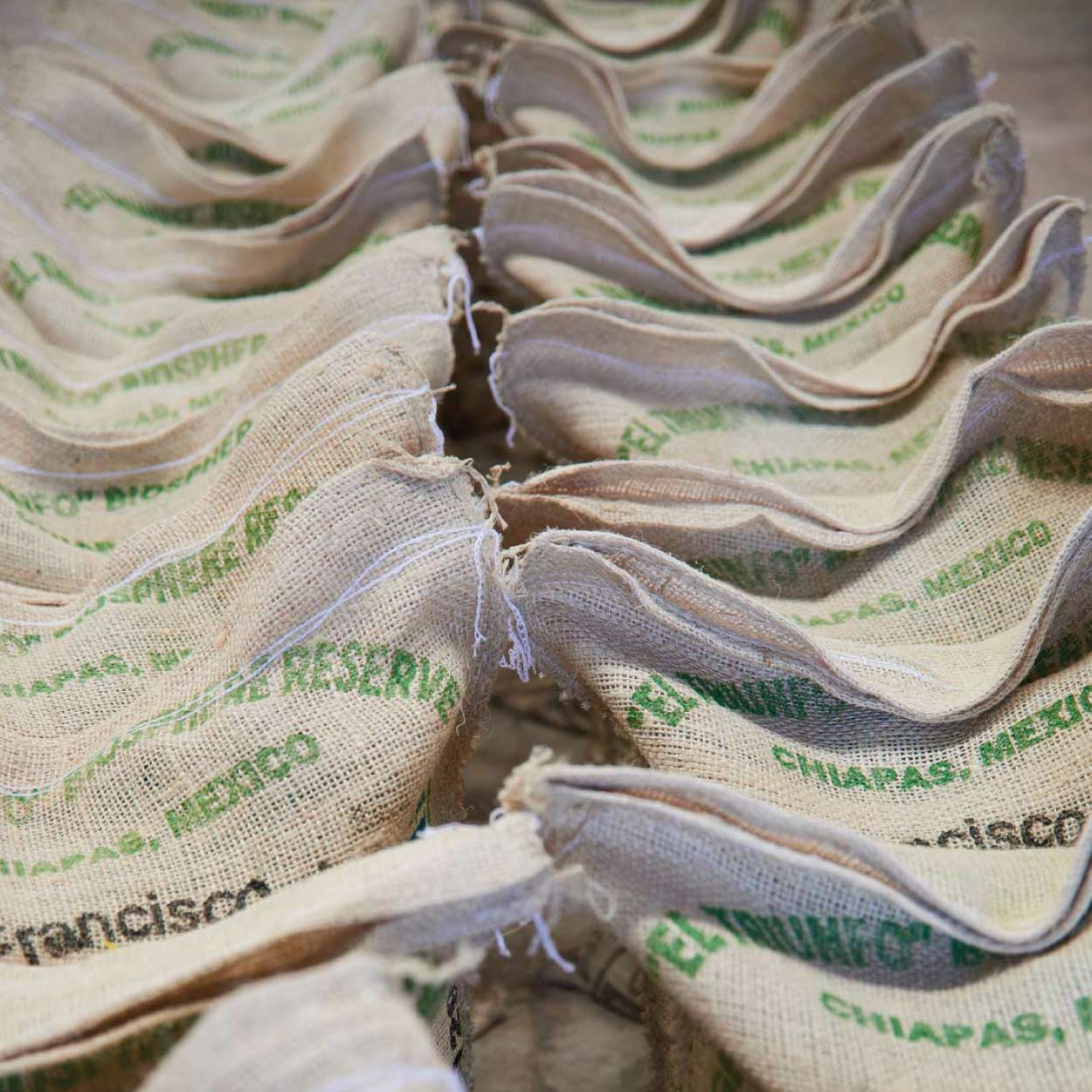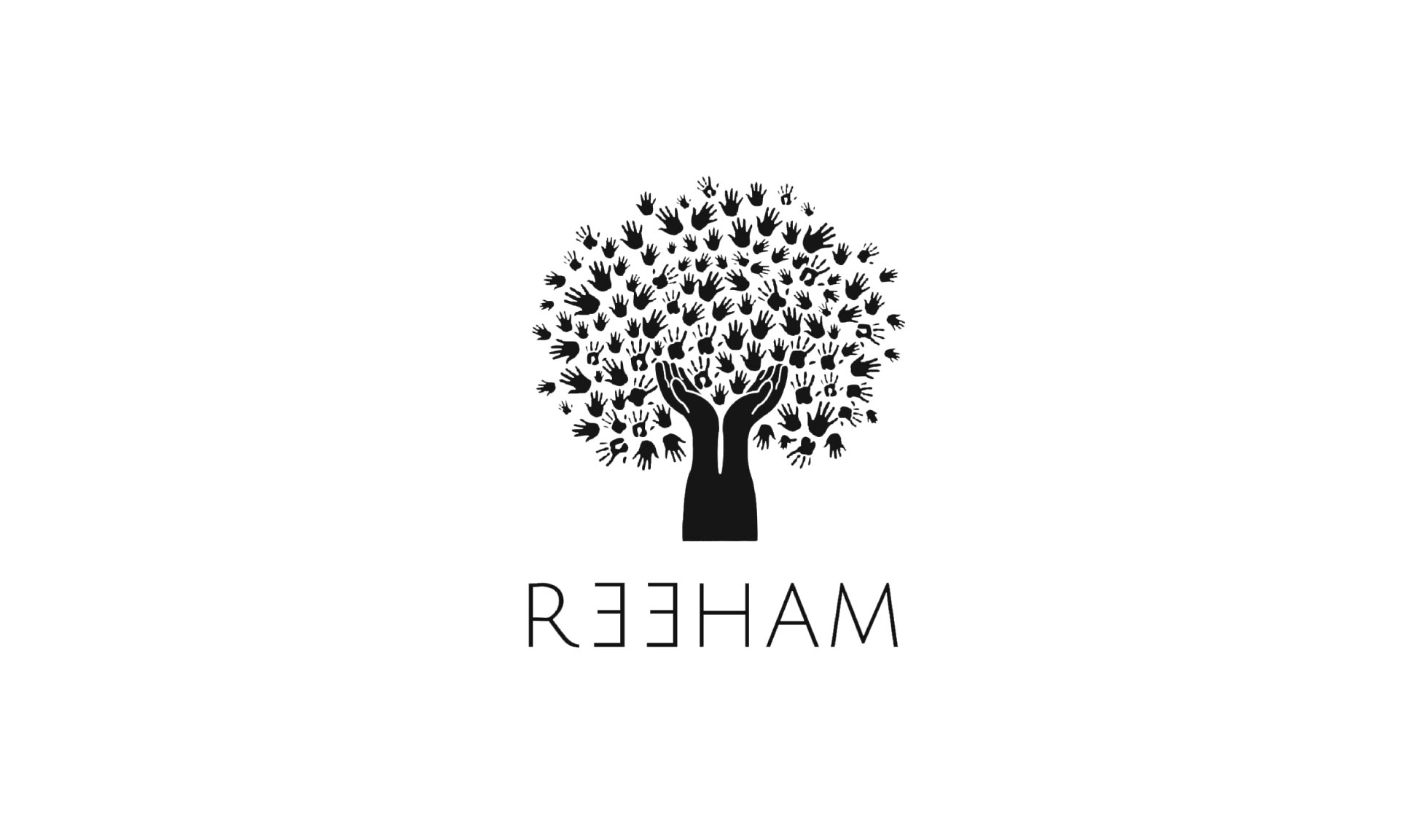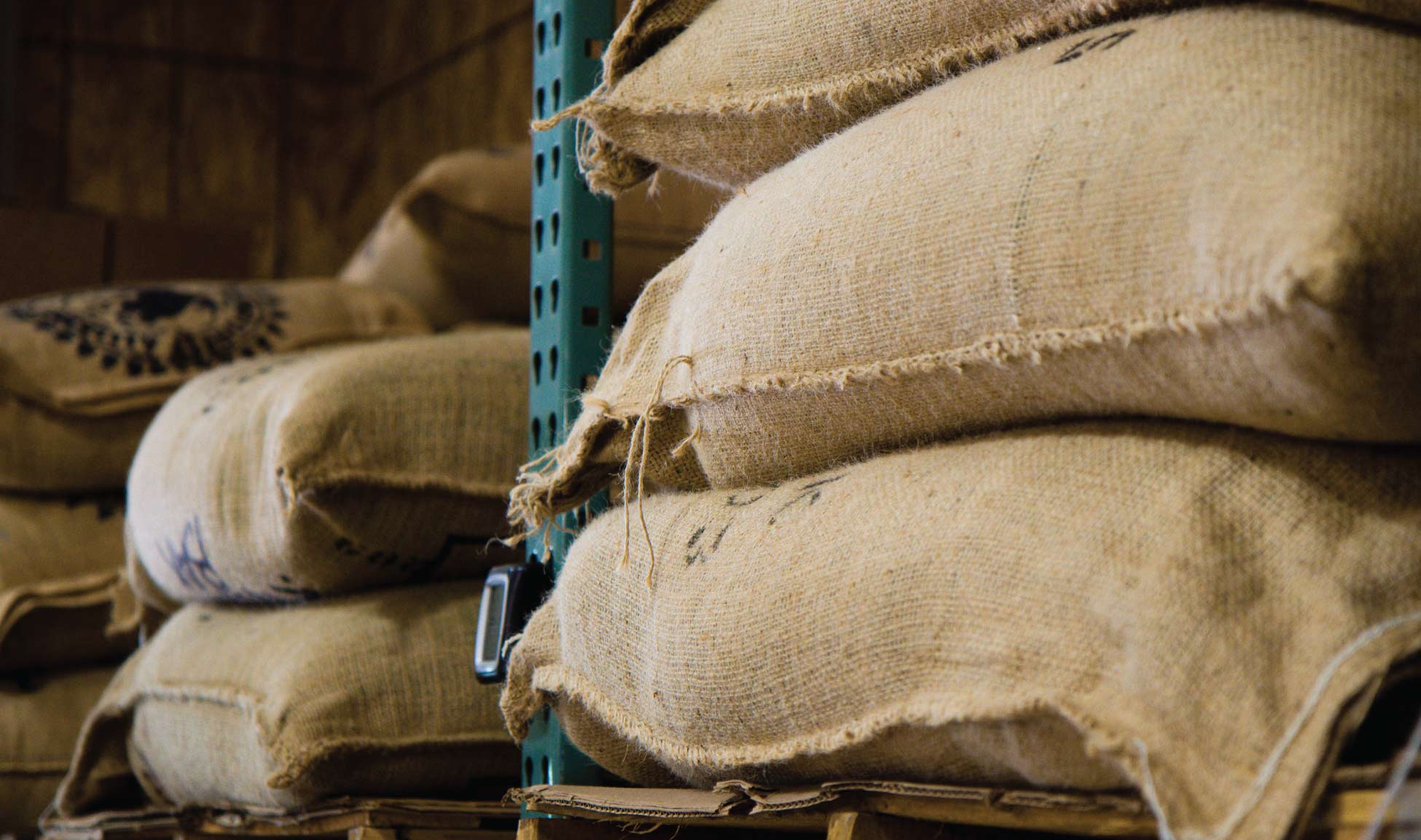For a detailed and practical overview, we would like to introduce you to the topic of Quality Management (QM for short) or Quality Assurance (QA for short) in the case of coffee roasting companies.
What exactly QM is, how it is implemented, and what the long-term benefits are.
The quality management of our coffee supply chain is the basis for a trustworthy relationship for customers, partners and suppliers. We therefore recommend to every company that the supply chain is always controlled, analyzed and optimized.
Accordingly, in order to find the weak points in the company's processes as far as possible, constant documentation is kept. Furthermore, these actions are also required in most (EU) countries.
With the help of external inspection bodies, the quality management task can be kept up to standard or even significantly upgraded.
The food industry is almost dependent on constant controls in hygiene, as well as the safety and maintenance of equipment and premises. In Germany, anyone working in this field must attend an official hygiene training course.
The so-called "red card" certifies an employee according to the Infection Protection Act a work permit. Without this, he is not allowed to work with food within the company framework. The instruction lasts no longer than 2 hours and is carried out in the local health offices.
Where hand washing and personal hygiene are still taken for granted, this can quickly be forgotten in day-to-day operations. We note: Human error is the biggest disruptive factor in quality management.
As an outsider, it may not be entirely obvious, but there are many factors that can add up to negatively impact the desired food standard.
The more colleagues, the more difficult
With time comes growth and with it new colleagues.
Of course, everyone has the red card, but quickly can and will be neglected. The first stone must be set rolling only by carelessness.
Especially in mass production, when the daily routine of colleagues becomes monotonous and routine. It's easy to lose concentration - sometimes out of sheer boredom.
For roasting masters, a hygienically impeccable, but above all odor-neutral working environment should be provided. Fresh coffee tends to absorb foreign odors quickly.
An extended quality management system is needed
As a premium brand, we have highly standardized our personal requirements for quality management. This means that we act strictly according to the recommended system of certification bodies and beyond.
It is a requirement that meets the Specialty Coffee. This includes the following general checklist to ensure the standard:
- Hygiene standard according to at least HACCP standard, better IFS
- Pest control like mice, rats, moths
- Safety e.g. pesticide-free, free from heavy metals
- Inventory management including stocktaking (minimum shelf life, batch traceability, production shortages)
- Master data maintenance
- legal conformities in Packing, (additive) substances and permissibility
- Documentation e.g. cleaning plan, control lists
There are many points for which Quality Management (QM for short) is responsible. In the best case, a QM manager is hired for this purpose, who conscientiously controls these phases of the supply chain.
The positive side of quality management
Close collaboration between Quality Management and the departments can ensure with confidence that a high quality product is offered.
In addition, these measures serve the safety and health of colleagues and also consumers.
For the company, this means a solid foundation and security in trading. There are many stakeholders involved who expect these guidelines. Especially in wholesale, the securities are an important issue here.
The following business partners may require quality management:
- Food retailers such as REWE and EDEKA
- Wholesale and foreign trade
- Manufactories and other manufacturing industries
- (Online) marketplaces like Amazon
- Reseller
- Agencies
- Private Label Partner
The rule here is that those who follow more of the industry standard are more successful in partner acquisition.
In addition, the needs such as BIO certification, fair trade or simply locality of the end consumers can thus also be satisfied.
Implement the Quality Management
For overview purposes, we limit this topic to our coffee beans. We are going from the beginning to the end of the supply chain that could positively influence the product.
Involving external help is recommended by us. Only they know what the status quo is in the current market. They also have the competencies to ensure legal compliance.
Nevertheless, simple steps for higher quality management can be taken with little effort and research. To do this, let's break down each stage of the supply chain from origin to consumer use:
| Cultivation | Growing area, Variety, No pesticides, Organic |
|---|---|
| Harvest | Temporal Harvest, Drying, Purchase quantities |
| Interim storage | Packing and storage at the farmer |
| Delivery | Ships Weeks Moisture |
| Acceptance | Product quality, defects, quantity |
| Warehousing | Light protection, hygiene, no foreign smell, safety |
| Roasting | Blend, duration, defects, temperature, foreign objects |
| Packing | Paper packaging, no aluminum |
| Warehousing | dry, aroma sealed, protected from light |
| Delivery | padded, dry, timely, correct quantity, variety, address |
| Application | Portafilter, French Press |
The origin of the coffee may be high quality, but as with all other (luxury) products, it can sometimes lose a lot of value due to the contributors / workers and materials coming into contact in the supply chain. Provided that the Quality Management System is intact, the product can naturally be upgraded. The latter is and should be the standard.
Anyone can start with a small QM plan to deliver a better product to the customer.
The Quality Management Framework
The first step in quality management is to know what positioning you have as a Brandproduct and service. Should the end product address a specific group or rather the general public?
The customers addressed alone then decide for themselves whether the product is actually their subjective view according to quality. What may seem high quality for person A may be the complete opposite for person B.
So get to know your customer better with tests, surveys, interviews and observations and convey the appropriate level of quality to them.
Quality Management Breakdown
The following is a detailing of each stage of the coffee supply chain as applied in our Reeham Coffee example. We explain what QM has to take into account and how it is in line with the brand's requirements.
The supply chain, together with quality management, reflects the value our roastery against:
The cultivation
Already when selecting the raw beans, we have to make sure that we find the right coffee farmers. Our as well as the farmer's demands must meet a high standard. Accordingly, we pay attention to the following points:
- No use of pesticides
- If possible BIO Standard, otherwise following
- Geographical conditions such as soil and climate
- Coffee bean variety
In addition to these hard facts, we naturally also look at the reliability, personality and conformity of the farmers. The history and, if applicable, references are also important for a roast master.

Quality management starts with the coffee farmer
Also look to match the weight class provider versus your company. This is where the requirements/interests of both parties could drift towards each other. How exactly to decide should be based on the previously designed Quality Management including positioning.
As a rule, smaller providers support each other.
The harvest
For harvesting, we can have little influence...but wish that this takes place in time in accordance with the developed aroma of the coffee bean. Trust in the chosen partner must be present.
For some bulk buyers, the plantation here can be specially created Private fields offer and according to the requirements carry out the cultivation and harvesting. Ultimately, this usually leads to increased production volume with sacrifices in quality.
When importing the filled coffee bags, in addition to many defects in the raw beans, one also sees many foreign bodies such as stones. Here again, positioning plays a role. In this case, Reeham this quality level is not an option.
The first intermediate storage
Like other foods, coffee is a natural product that loses its aroma, shape, taste and color over time. Depending on storage, you can partially counteract this process.

Coffee temporary storage
Like other foods, coffee is a natural product that loses its aroma, shape, taste and color over time. Depending on storage, you can partially counteract this process.
In this intermediate storage phase, however, the sooner the fresh raw beans leave the plantation and are delivered directly to the next customers, the better. Here, Quality Management can only exert indirect influence. Although it is possible to include a clause in the contract, it is usually left to the partner.
The farmer should not take too much time here to send out his goods.
The coffee import
At this point, the work of quality management really begins.
Assuming that the plantation sends its goods to the shipping company in a timely manner, we can expect a regular delivery time of a few weeks.
By default, the delivery should include the raw beans in 25kg /50kg bags of jute. For the logistics department it is only good to know that in most cases the bags end up on (EUR) pallets.
Farmers must ensure that the bags are not exposed to strong external influences to the contents. Phenomena such as mold and general breakage can sometimes result in the complete loss of the goods.
The second intermediate storage
Immediately upon receipt, ensure that the beans are taken directly to the appropriate storage rooms. Among other things, they should be specific conditions for the coffee...
- protected from light
- odorless
- dry
- chilled
- hygienically clean
...be.
In a wholesale and foreign trade aspect, as well as in all general remote sales, the very important supporting role of the logistics department is too often underestimated. Do not make this mistake in any case!
They are the last step before the goods land to the customer. If there is a mistake here, the work of Sales, Marketing was all for nothing.
The coffee roasting
In the case of Specialty coffee a gentle roasting process is used with the right coffee composition.
The packing
Not only the coffee alone should be flawless. The packaging in which the beans are packed should also be perfect. Odorless and tasteless stand-up pouches are best suited here and preserve the aroma of the freshly roasted beans.
The material used here is aluminum-free kraft paper with air valve.
For the customer experience and the first qualitative impression, an appealing bag design was still to be created. We are admittedly halt superficial in this sense.
The storage
Once the packed beans are ready for sale, they are stored in the same conditions as mentioned above.
The application
How to drink end is up to each. Only in the selection for each method of preparation, such as fully automatic, portafilter, French Press, etc., we can make a recommendation.
With guides, tips and tricks, we can entice the user to try alternatives that can extract the optimal flavor and aroma of a coffee bean.
Ultimately, everyone drinks their coffee the way they want. In the office, on the road, with friends and family. With quality management, we offer our customers a solid quality basis on which they can build.
Establish a routine
Each action should follow an existing pattern. This pattern can be adapted over time. The routine for this is an important aspect.
In line with this, documentation should also always be provided for this sample in order to ensure traceability. This is immensely important in the case of faulty production in order to prevent or reduce even greater damage if necessary.
In addition, this is also a question of product liability insurance.
Additionally, staff must be adept at communicating information, recognizing and distinguishing things.
With a mature quality management you get the technical framework, but they are of no use if they are not communicated to employees in an appealing and clear way.
So before implementing a Quality Management System, it is necessary to work on collegial interactions beforehand.
Asking the right questions is the most important thing. Quality management grows and changes over time, because the products or the portfolio has changed its positioning, or because you just want it to.
Despite the implementation of digital tools, machines and agile processes, in some cases the highest quality cannot be guaranteed. Because humans are not machines and are not always error-free.
Perhaps the right dose of coffee is missing or the colleague has too little sleep again. The fact is that there will be days when the human element fails once again.
For our coffee we assign our QM manager who motivates the staff to the QM Rulebook to follow. In addition, performs random testing and holds correspondence with suppliers.
Our QUality Management Conclusion
We also had to deal with all the documentation on quality management, hygiene, safety and the law. An internal legal department or a knack for good research is always a great help.
This is not urgently necessary for quality management, but it serves the general knowledge of the B2B business. As already described, this know-how is strongly conducive to building relationships and partnerships.
There is always a bias, but the more you can report on it and communicate it to the outside world, the greater and faster the build-up of trust.
We at Reeham would also like to help you in the B2B field and share as much as possible our knowledge, experience, but most of all helpful tips 🙂
This only makes the market more attractive and creative.
See you then!


